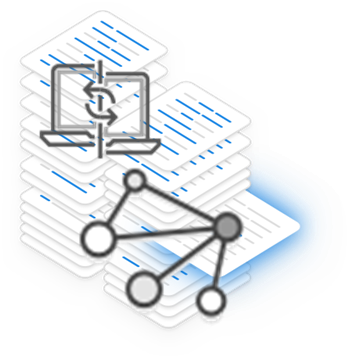

Global CFO Survey: Finance Digital Transformation is a Key Indicator of Business Agility in Post-COVID-19 Era
Global CFO Survey: Finance Digital Transformation is a Key Indicator of Business Agility in Post-COVID-19 Era
Dr. Evangelo Damigos; PhD | Head of Digital Futures Research Desk
- Economic Growth
- Risk
- Digital Transformation
Publication | Update: Sep 2020

Workday released its global Chief Financial Officer (CFO) Indicator Survey, “Finance Digital Transformation,” which reveals a direct link between finance digital transformation and agile business practices, better decision-making, and more efficient reporting, planning, and financial operations—all of which organizations will need to thrive in the new COVID-19 normal.

CFOs identify top challenges that hinder digital finance transformation initiatives.
As more CFOs Prioritize Digital Transformation in COVID-19 Recovery; Technical Skills Gap, Resistance to Change Are Barriers
The research, conducted during the period that COVID-19 was declared a pandemic and many companies were forced to rapidly shift to remote work, reveals that while nearly half of CFOs have not completed any digital transformation initiatives in finance, 34 percent expect to prioritize it in one year—during recovery from COVID-19. The study shows that those who do will reap benefits. The 54 percent of CFOs who have implemented some or many digital transformation initiatives pre-pandemic consistently perform better on agility, enhanced insights, and improved efficacy.
“CFOs were thrust into uncharted territory when the pandemic hit, underscoring the need for them to be able to make data-driven decisions to adjust, plan, and then continuously re-plan as conditions rapidly changed,” says Michael Magaro, senior vice president, business finance and investor relations, Workday. “This survey validates CFOs’ shifting priorities as they look to a combination of new skills and technologies to give them greater visibility and agility. And, while finance has been slower to embrace digital transformation, it's clear the pandemic has become both a catalyst and imperative for change.”
The CFO indicator report was done in partnership with Longitude Research and includes responses from 225 global CFOs on key challenges and priorities as they manage through the pandemic.
Key survey findings show that:
- Digital finance transformation yields greater agility, efficacy, and confidence for CFOs. Digital accelerators, companies that have implemented some digital transformation initiatives in finance, are more agile and proficient at efficient reporting, planning, and financial close than digital novices, companies that have yet to implement digital transformation into the finance function. The accelerators are also more confident in the accuracy of their two-year profit and loss (P&L) forecast (73 percent) vs. digital novices (43 percent).
- Roadblocks to finance digital transformation are within the CFO’s control. Lack of technology skills and internal resistance to change are the two greatest challenges to digital transformation in finance. Lack of budget was the lowest rated challenge.
- Finance teams are challenged to deliver insights to the wider business at a time when it is needed most. Nearly half of CFOs surveyed believe that critical business decisions are delayed because finance is not proficient in delivering meaningful insights from data. More than a third (34 percent) of CFOs cite a shortage of skills needed to work with emerging technology as a key challenge to generating these insights.
- CFOs prioritize visibility and risk mitigation skills in today’s challenging environment. Top skills that CFOs need to urgently add to their team, through both hiring and reskilling, are predictive modeling/scenario planning and the ability to identify and manage risk. The lowest ranked skill is spreadsheet proficiency.
Overcoming Obstacles to Transformation
Digital transformation in finance can help transform the entire organization, the report notes. Steps CFOs can take are to prioritize technology investments that provide greater forward-looking visibility, identify and address technology skills gaps, incorporate key performance indicators (KPIs) to overcome resistance to change, and consolidate data into a single source for truth and clarity.
The report is available now and additional insights are shared in the blog, “How finance digital transformation is saving businesses—and preparing them for the future.”
 Digital Themes: Economic Growth, Risk, Digital Transformation
Digital Themes: Economic Growth, Risk, Digital Transformation

HTML
 Access Rights | Content Availability:
Access Rights | Content Availability: 

Objectives and Study Scope
This study has assimilated knowledge and insight from business and subject-matter experts, and from a broad spectrum of market initiatives. Building on this research, the objectives of this market research report is to provide actionable intelligence on opportunities alongside the market size of various segments, as well as fact-based information on key factors influencing the market- growth drivers, industry-specific challenges and other critical issues in terms of detailed analysis and impact.
The report in its entirety provides a comprehensive overview of the current global condition, as well as notable opportunities and challenges.
The analysis reflects market size, latest trends, growth drivers, threats, opportunities, as well as key market segments. The study addresses market dynamics in several geographic segments along with market analysis for the current market environment and future scenario over the forecast period.
The report also segments the market into various categories based on the product, end user, application, type, and region.
The report also studies various growth drivers and restraints impacting the market, plus a comprehensive market and vendor landscape in addition to a SWOT analysis of the key players.
This analysis also examines the competitive landscape within each market. Market factors are assessed by examining barriers to entry and market opportunities. Strategies adopted by key players including recent developments, new product launches, merger and acquisitions, and other insightful updates are provided.
Research Process & Methodology

We leverage extensive primary research, our contact database, knowledge of companies and industry relationships, patent and academic journal searches, and Institutes and University associate links to frame a strong visibility in the markets and technologies we cover.
We draw on available data sources and methods to profile developments. We use computerised data mining methods and analytical techniques, including cluster and regression modelling, to identify patterns from publicly available online information on enterprise web sites.
Historical, qualitative and quantitative information is obtained principally from confidential and proprietary sources, professional network, annual reports, investor relationship presentations, and expert interviews, about key factors, such as recent trends in industry performance and identify factors underlying those trends - drivers, restraints, opportunities, and challenges influencing the growth of the market, for both, the supply and demand sides.
In addition to our own desk research, various secondary sources, such as Hoovers, Dun & Bradstreet, Bloomberg BusinessWeek, Statista, are referred to identify key players in the industry, supply chain and market size, percentage shares, splits, and breakdowns into segments and subsegments with respect to individual growth trends, prospects, and contribution to the total market.
Research Portfolio Sources:
Global Business Reviews, Research Papers, Commentary & Strategy Reports
M&A and Risk Management | Regulation

The future outlook “forecast” is based on a set of statistical methods such as regression analysis, industry specific drivers as well as analyst evaluations, as well as analysis of the trends that influence economic outcomes and business decision making.
The Global Economic Model is covering the political environment, the macroeconomic environment, market opportunities, policy towards free enterprise and competition, policy towards foreign investment, foreign trade and exchange controls, taxes,
financing, the labour market and infrastructure.
We aim update our market forecast to include the latest market developments and trends.
Review of independent forecasts for the main macroeconomic variables by the following organizations provide a holistic overview of the range of alternative opinions:
As a result, the reported forecasts derive from different forecasters and may not represent the view of any one forecaster over the whole of the forecast period. These projections provide an indication of what is, in our view most likely to happen, not what it will definitely happen.
Short- and medium-term forecasts are based on a “demand-side” forecasting framework, under the assumption that supply adjusts to meet demand either directly through changes in output or through the depletion of inventories.
Long-term projections rely on a supply-side framework, in which output is determined by the availability of labour and capital equipment and the growth in productivity.
Long-term growth prospects, are impacted by factors including the workforce capabilities, the openness of the economy to trade, the legal framework, fiscal policy, the degree of government regulation.
Direct contribution to GDP
The method for calculating the direct contribution of an industry to GDP, is to measure its ‘gross value added’ (GVA); that is, to calculate the difference between the industry’s total pretax revenue and its total boughtin costs (costs excluding wages and salaries).
Forecasts of GDP growth: GDP = CN+IN+GS+NEX
GDP growth estimates take into account:

Market Quantification
All relevant markets are quantified utilizing revenue figures for the forecast period. The Compound Annual Growth Rate (CAGR) within each segment is used to measure growth and to extrapolate data when figures are not publicly available.
Revenues
Our market segments reflect major categories and subcategories of the global market, followed by an analysis of statistical data covering national spending and international trade relations and patterns. Market values reflect revenues paid by the final customer / end user to vendors and service providers either directly or through distribution channels, excluding VAT. Local currencies are converted to USD using the yearly average exchange rates of local currencies to the USD for the respective year as provided by the IMF World Economic Outlook Database.
Industry Life Cycle Market Phase
Market phase is determined using factors in the Industry Life Cycle model. The adapted market phase definitions are as follows:

The Global Economic Model
The Global Economic Model brings together macroeconomic and sectoral forecasts for quantifying the key relationships.
The model is a hybrid statistical model that uses macroeconomic variables and inter-industry linkages to forecast sectoral output. The model is used to forecast not just output, but prices, wages, employment and investment. The principal variables driving the industry model are the components of final demand, which directly or indirectly determine the demand facing each industry. However, other macroeconomic assumptions — in particular exchange rates, as well as world commodity prices — also enter into the equation, as well as other industry specific factors that have been or are expected to impact.
Forecasts of GDP growth per capita based on these factors can then be combined with demographic projections to give forecasts for overall GDP growth.
Wherever possible, publicly available data from official sources are used for the latest available year. Qualitative indicators are normalised (on the basis of: Normalised x = (x - Min(x)) / (Max(x) - Min(x)) where Min(x) and Max(x) are, the lowest and highest values for any given indicator respectively) and then aggregated across categories to enable an overall comparison. The normalised value is then transformed into a positive number on a scale of 0 to 100. The weighting assigned to each indicator can be changed to reflect different assumptions about their relative importance.

The principal explanatory variable in each industry’s output equation is the Total Demand variable, encompassing exogenous macroeconomic assumptions, consumer spending and investment, and intermediate demand for goods and services by sectors of the economy for use as inputs in the production of their own goods and services.
Elasticities
Elasticity measures the response of one economic variable to a change in another economic variable, whether the good or service is demanded as an input into a final product or whether it is the final product, and provides insight into the proportional impact of different economic actions and policy decisions.
Demand elasticities measure the change in the quantity demanded of a particular good or service as a result of changes to other economic variables, such as its own price, the price of competing or complementary goods and services, income levels, taxes.
Demand elasticities can be influenced by several factors. Each of these factors, along with the specific characteristics of the product, will interact to determine its overall responsiveness of demand to changes in prices and incomes.
The individual characteristics of a good or service will have an impact, but there are also a number of general factors that will typically affect the sensitivity of demand, such as the availability of substitutes, whereby the elasticity is typically higher the greater the number of available substitutes, as consumers can easily switch between different products.
The degree of necessity. Luxury products and habit forming ones, typically have a higher elasticity.
Proportion of the budget consumed by the item. Products that consume a large portion of the
consumer’s budget tend to have greater elasticity.
Elasticities tend to be greater over the long run because consumers have more time to adjust their behaviour.
Finally, if the product or service is an input into a final product then the price elasticity will depend on the price elasticity of the final product, its cost share in the production costs, and the availability of substitutes for that good or service.
Prices
Prices are also forecast using an input-output framework. Input costs have two components; labour costs are driven by wages, while intermediate costs are computed as an input-output weighted aggregate of input sectors’ prices. Employment is a function of output and real sectoral wages, that are forecast as a function of whole economy growth in wages. Investment is forecast as a function of output and aggregate level business investment.


 Industry: Financial Services
Industry: Financial Services 
